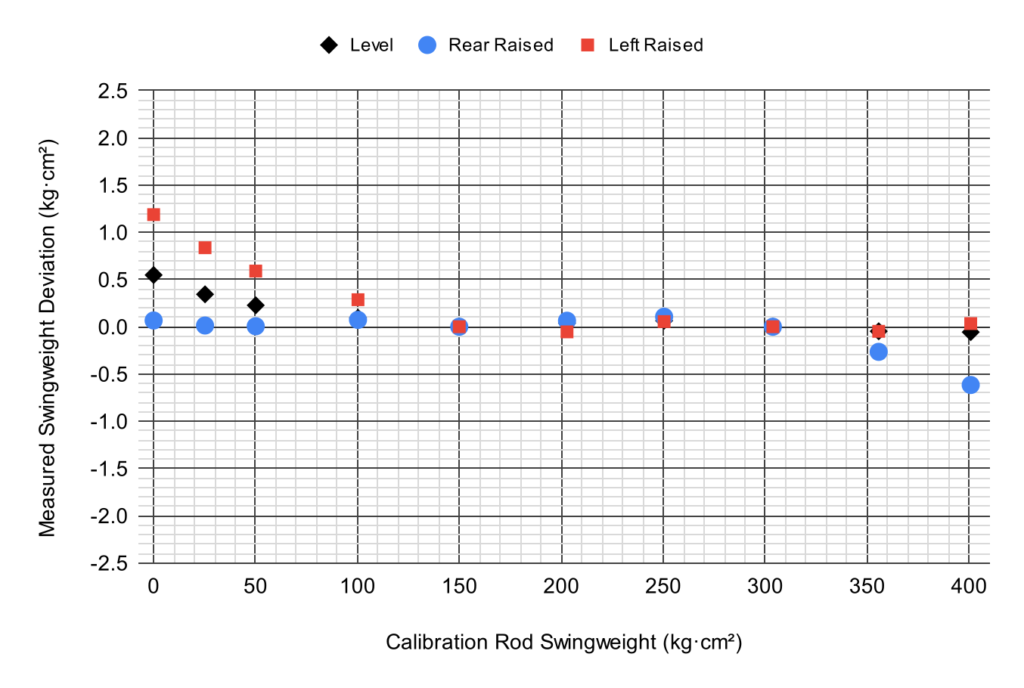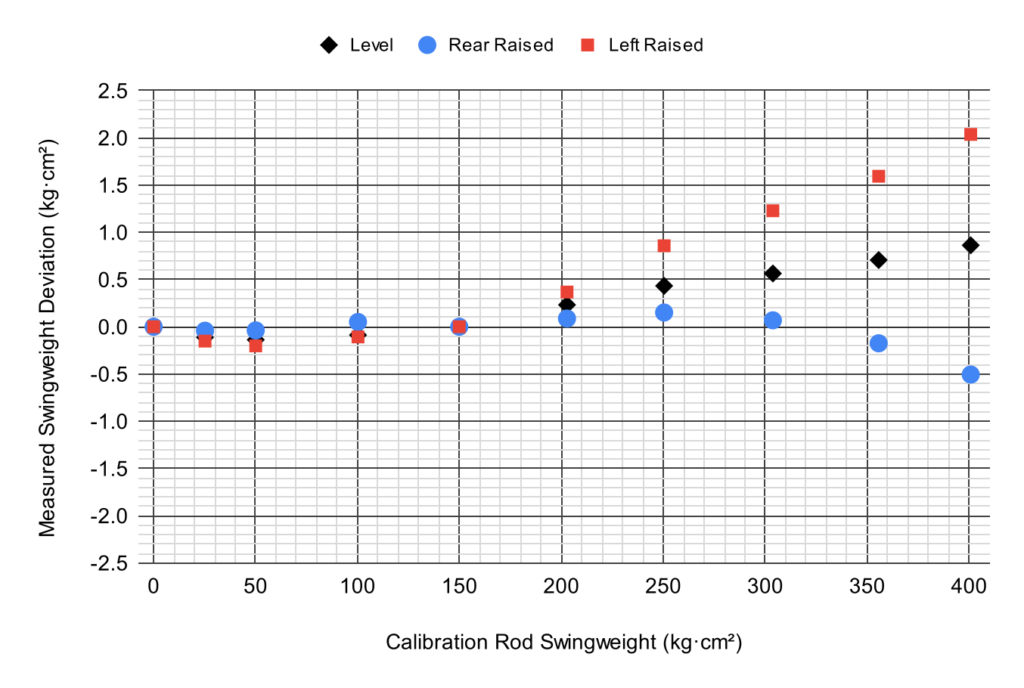I previously completed some linearity testing as described in Briffidi SW1 Linearity Testing, and I recently repeated the testing with the SW1 intentionally not level.
First, I leveled the device and then raised the rear foot by two turns (1 mm). I took measurements at ten points, as described in the prior post, except I reduced the number of measurements from five to two in each configuration, as five seemed like overkill. Then, I returned the rear foot to level and raised the left-side foot by two turns (1 mm), and repeated the testing.
The plots below show the results of the prior, level testing and the two non-level configurations. For each, I calculated the calibration values in two ways. For Figure 1, similar to the standard calibration procedure, I used the measurements nearest to 150 and 300 kg·cm². For Figure 2, I used the measurements at zero (empty) and nearest to 150 kg·cm².

With the standard calibration, using the measurements nearest to 150 and 300 kg·cm², the deviation is fairly small in the range of normal tennis rackets, regardless of leveling. With the rear raised, the effect of gravity is seen at higher swingweights. Gravity adds to the spring force and reduces the period of oscillation. With the left side raised, there is an effect at low swingweights that I don’t fully understand.

With the 0 and 150 kg·cm² calibration, the non-linearity of the measurements is a bit more apparent. Raising the rear actually seemed to offset some of the non-linearity present when level. Raising the left side seemed to add to it.
My take-away is that for measuring typical tennis rackets, calibration does a good job of compensating for leveling error. If you’re going to calibrate after, it’s not necessary to spend much time leveling. If your surface is fairly level, it’s probably fine to just leave the leveling feet all-the-way in. Leveling would still be important if you wanted to move the SW1 and not re-calibrate, perhaps if you were taking the device somewhere without the calibration rod. If the device is level when calibrated and level after being moved, the measurements should be good.

